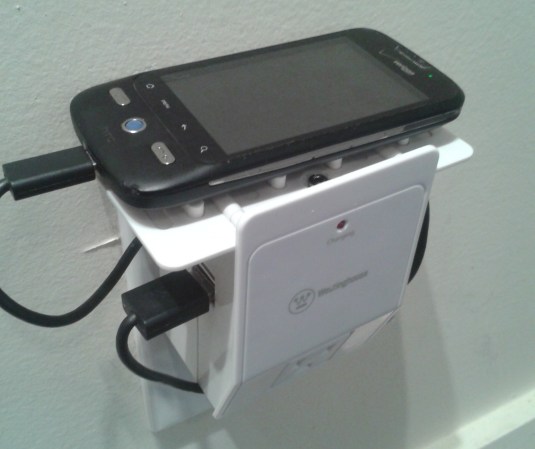
While wandering around the aisles of his local electronics store this Westinghouse USB charging station caught [James’] eye. He sized it up and realized it would make the perfect enclosure for a small WiFi router. And so began his project to turn a TP-Link TL-WR703N into a DIY Pwn Plug.
The basic idea is to include hidden capabilities in an otherwise normal-looking device. For instance, take a look at this ridiculously overpriced power strip that also happens to spy on your activities. It doesn’t sound like [James] has any black hat activities planned, but just wanted an interesting application for the router.
He removed the original circuit board from the charging station to make room for his own internals. He inserted a cellphone charger to power the router, then desoldered the USB ports and RJ-45 connector for the circuit board to be positioned in the openings of the case. He even included a headphone jack that breaks out the serial port. There’s a lot of new stuff packed into there, but all of the original features of the charging station remain intact.












